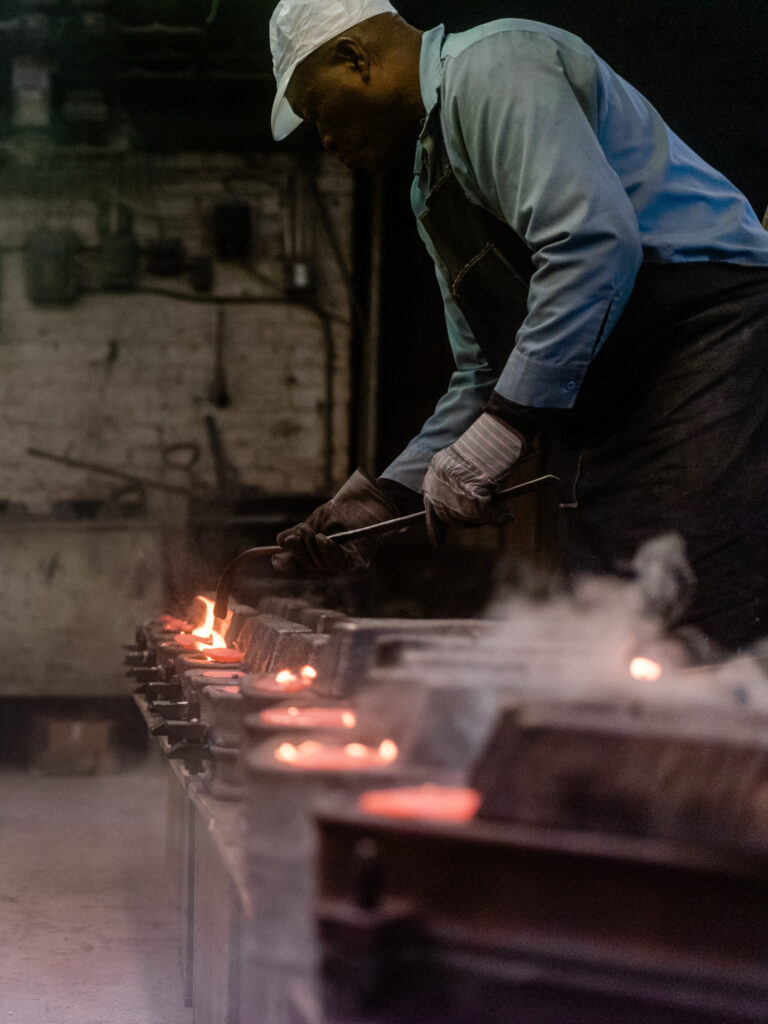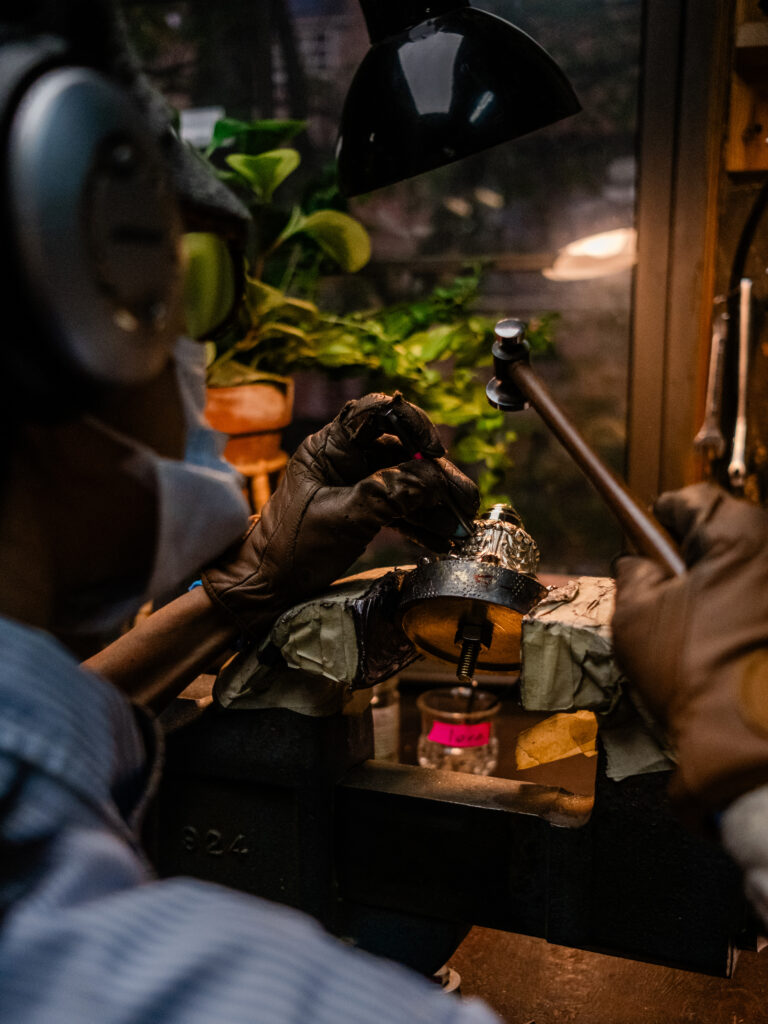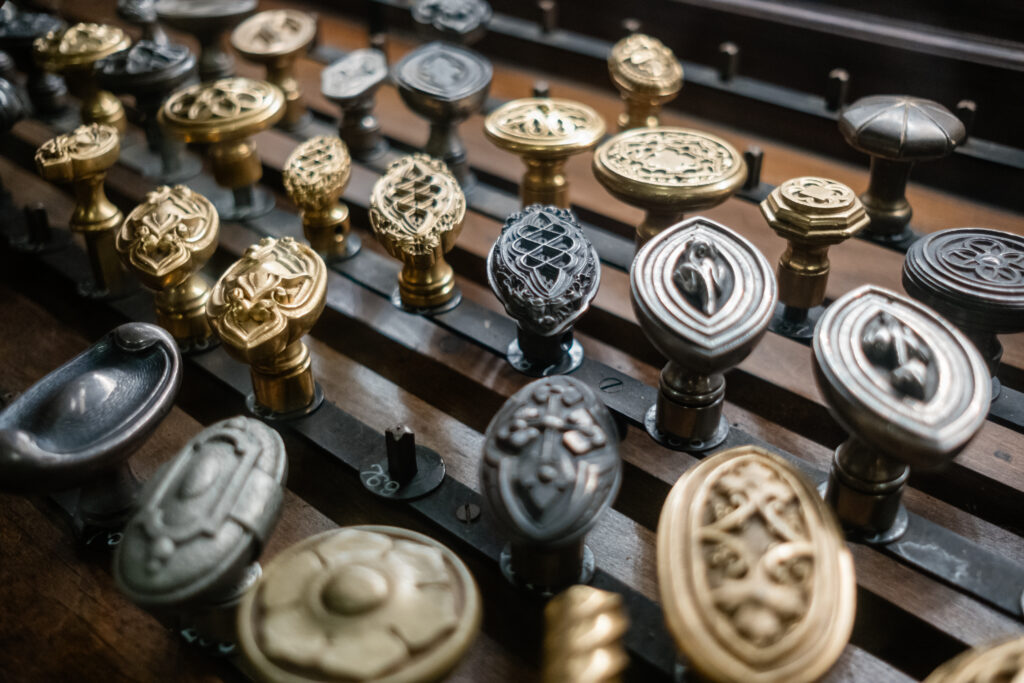Hidden in plain sight amidst one of Manhattan’s most sought-after neighborhoods, this storied foundry has, since 1857, crafted the architectural hardware for some of America’s finest homes (including its president’s).
Let’s say you’re renovating your house and you need drawer pulls, door hinges, or bathroom faucets. Of course you could go to Home Depot or Ace Hardware, like the Joneses. But if you aspire to a more genteel and grand lifestyle, you may want to try a new option — or, rather, an old one.
P.E. Guerin, the only U.S. foundry still making architectural hardware and furniture mounts by hand, has been in the business of designing and forging gorgeous fixtures since 1857. Since 1892 (the same year the Nutcracker premiered in St. Petersburg and Edison patented the two-way telegraph), P.E. Guerin has operated, by appointment only, out of a building on a quiet block of Jane Street in New York’s West Village.

It’s hard to fathom that this process, so ancient and volatile, is undertaken daily in a brick building in the densely populated West Village.

Guerin’s gleaming products can be seen in some very nice places. The Biltmore Estate in Asheville, North Carolina, for instance, sports drapery hardware made by the firm. Gracie Mansion, the Polo Club, and the domed and elegant Williamsburgh Savings Bank, now WEYLIN, all contain metalwork forged by P.E. Guerin. Should you opt to include the company’s hardware in your home, you’d be joining a client list that includes Henry Ford, Marjorie Merriweather Post, and John and Jacqueline Kennedy (who chose Guerin’s finishes for their 1961 White House restoration).
Sand-casting, the metalworking process used to create P.E. Guerin’s hardware and mounts, has been around since 3000 BCE. The technique, which involves pressing a mold design into sand and then pouring molten metal into the detailed cavity left behind, has limitations. The most serious problem is that each sand mold is only good for a single use. But sand-casting’s benefits — the sand itself is reusable, it easily withstands the intense heat of the molten metal without breaking or cracking, its permeability allows fumes and heat to escape as the metal cools, and its flow and extreme granularity is perfect for holding (and releasing) intricate designs — outweigh its single-use downside.

Should you opt to include the company’s hardware in your home, you’d be joining a client list that includes Henry Ford, Marjorie Merriweather Post, and John and Jacqueline Kennedy.

After the mold has completely cooled, the piece is taken out of the sand and, in a different part of the Jane Street building, it is finished by removing any burrs and channels left from the process, and then by being burnished, plated, undergoing additional carving and engraving, and finally, polished to a warm gleam.
It’s hard to fathom that this process, so ancient and volatile, is undertaken daily in a brick building in the densely populated West Village. Or to accept that red-hot molten metal, poured into boxes full of sand that’s been impressed with detailed curlicues and ornately flourished designs, eventually results in these stately and intricate pieces, sought after by architects, designers, furniture makers, and homeowners.
The showroom, quiet and calm (though occasional thuds and tapping can be heard from upstairs), is lined with glass-front cases that display everything from Giacometti-inspired drawer pulls and Empire-style bathtub taps to cremone door bolts that would look right at home in a chateau on the Loire and bespoke latches for library cabinets. Also on display: one of the beautifully subdued Art Deco door handles P.E. Guerin designed for 111 West 57th Street, completed in 2021 above the landmarked Steinway Hall. A site visit revealed these newly-commissioned handles would be joining other P.E. Guerin hardware dating to the Hall’s 1925 construction.

We’re used to talking about modern developments disrupting traditional ways of doing things, but in this case, the traditional way of forging products and burnishing them by hand feels like a welcome disruption of picking out machine-made fixtures at Lowe’s or ordering online from Amazon or Pottery Barn. Why not go for the gold(en)?
